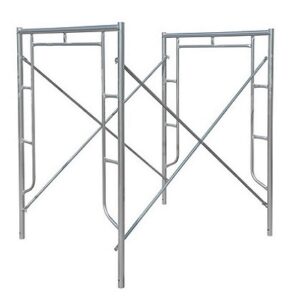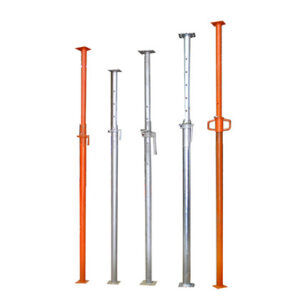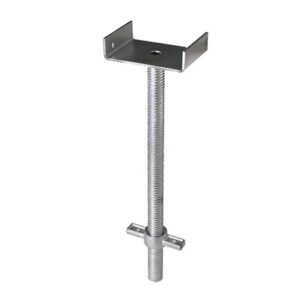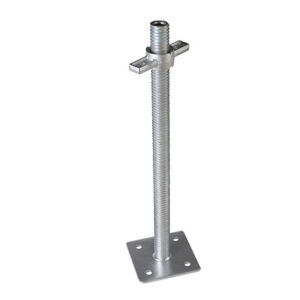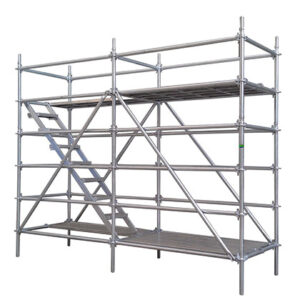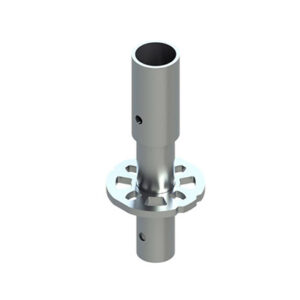Scaffolding is an essential element in the construction industry, providing necessary support for workers and materials during building projects. However, the use of scaffolding comes with inherent risks, making the implementation of safety measures critical to ensuring a safe working environment. This article will explore the essential safety measures for scaffolding, aimed at protecting workers and preventing accidents.
1. Choosing the Right Scaffolding Type
Selecting the appropriate type of scaffolding is fundamental to safety. There are various types available, such as Ringlock and Cuplock systems, each designed for specific applications. Understanding the requirements of your project will help you choose the right scaffolding that offers the necessary support and stability. Ensure that the selected scaffolding meets national safety standards and has the appropriate certifications. A well-chosen scaffolding system reduces the risks associated with inadequate support structures.
2. Regular Inspections and Maintenance
Frequent inspections are vital for maintaining scaffolding safety. Scaffolding should be inspected daily before use, particularly after adverse weather conditions or any modifications made to the structure. Key elements to check include:
- Connections: Ensure all joints and connections are secure.
- Structural Integrity: Look for signs of damage or corrosion in vertical standards and horizontal braces.
- Guardrails: Check that all safety rails and toe boards are intact.
Maintaining a detailed log of inspections helps to ensure that scaffolding remains safe for use.
3. Comprehensive Safety Training
Training is crucial for all personnel involved in scaffolding operations. A comprehensive safety training program should include:
- Assembly and Disassembly Procedures: Workers should be trained on the correct methods for setting up and taking down scaffolding.
- Safe Work Practices: Emphasize maintaining three points of contact when climbing and proper use of ladders and platforms.
- Emergency Procedures: Workers should understand emergency protocols, including evacuation routes and first-aid responses.
Regularly updating training sessions ensures that all workers remain informed about safety practices.
4. Utilizing Personal Protective Equipment (PPE)
Personal protective equipment plays a crucial role in safeguarding workers on scaffolding. Essential PPE includes:
- Hard Hats: To protect against head injuries from falling objects.
- Safety Glasses: To shield eyes from debris and dust.
- High-Visibility Vests: To ensure workers are easily seen on the site.
- Safety Harnesses: Necessary when working at heights to prevent falls.
- Steel-Toed Boots: To provide foot protection and stability.
Ensuring that all workers wear appropriate PPE significantly reduces the risk of injuries.
5. Establishing Safe Work Zones
Clearly defined work zones around scaffolding are essential for preventing accidents. This can be achieved by:
- Using Barriers: Setting up physical barriers or cones to mark safe zones.
- Posting Warning Signs: Clearly visible signs should alert others to potential hazards.
- Limiting Access: Restricting entry to authorized personnel only.
Regular safety briefings can reinforce the importance of adhering to designated work zones.
6. Adhering to Load Limits
Every scaffolding system has specified load limits, which must be strictly followed. Overloading scaffolding can lead to structural failures, risking the safety of workers. Key considerations include:
- Weight Distribution: Ensure loads are evenly distributed to prevent tipping or collapse.
- Monitoring Loads: Regularly check the weight being supported to avoid exceeding limits.
By strictly adhering to load limits, you can minimize the risks associated with overloading.
7. Developing Emergency Plans
An effective emergency plan is essential for addressing potential incidents. Your emergency plan should include:
- Evacuation Routes: Clearly marked and accessible routes for safe exits.
- Designated Assembly Points: Areas where workers can regroup after an evacuation.
- Contact Information: Easily accessible numbers for emergency services and on-site first aid responders.
- Regular Drills: Conduct drills to familiarize workers with emergency procedures and ensure a quick response during actual incidents.
Having a well-defined emergency plan can greatly reduce panic and improve response times during emergencies.
8. Monitoring Weather Conditions
Weather can significantly impact scaffolding safety. Adverse conditions such as high winds, heavy rain, or snow can compromise the structural integrity of scaffolding. To mitigate risks:
- Assess Weather Conditions: Before commencing work, evaluate current and forecasted weather.
- Secure Scaffolding: Ensure scaffolding is properly secured during inclement weather.
- Delay Work if Necessary: Do not hesitate to postpone work if weather conditions are deemed unsafe.
Being vigilant about weather changes helps prevent accidents related to environmental factors.
9. Fostering a Safety Culture
Creating a culture of safety within your organization is essential for long-term safety improvements. Consider these strategies:
- Management Commitment: Demonstrate a commitment to safety from the top down.
- Open Communication: Encourage workers to voice safety concerns without fear of repercussions.
- Recognition Programs: Implement reward systems for teams and individuals who prioritize safety practices.
- Involvement in Safety Planning: Involve workers in safety discussions and planning to foster ownership of safety practices.
By prioritizing safety culture, you empower workers to take responsibility for their safety and that of their colleagues.
Conclusion
Safety measures for scaffolding are essential for protecting workers and ensuring successful construction projects. By choosing the right scaffolding, conducting regular inspections, providing comprehensive training, utilizing PPE, establishing clear work zones, adhering to load limits, and having emergency plans in place, you can significantly reduce the risks associated with scaffolding. Fostering a strong culture of safety not only improves compliance but also enhances overall productivity and worker morale. If you have further questions or need expert guidance on scaffolding safety, feel free to reach out. Your safety is our priority!

